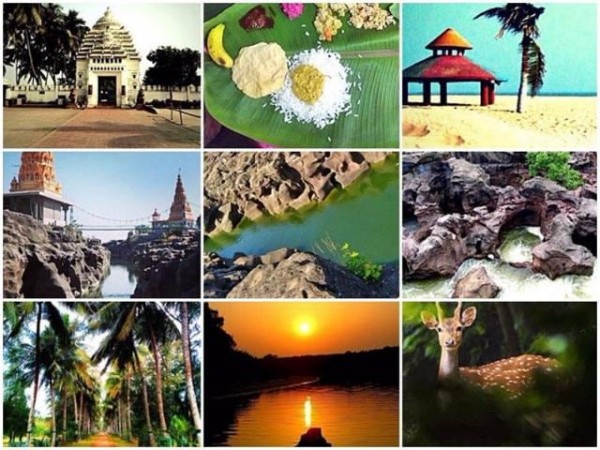
India, with its rich history spanning thousands of years, is a land of fascinating cultural diversity and heritage. From majestic palaces to intricate monasteries, the country is home to many architectural wonders that stand up to the decorum of the times. Although famous monuments like the Taj Mahal and the Red Fort line the coast of the republic, there lie hidden gems – forgotten legacies that are equally relevant. The purpose of this article is to throw light on some of the lesser known but important cultural treasures that form the canons of India's glorious past.
Hampi - The Lost City of Vijayanagara: Situated on the seashore in the rugged region of Karnataka, the religious site of Hampi is a reminder of the Vijayanagara Empire era. The once prosperous capital city of Hampi, built of complex stone, adorned with grand temples and monumental buildings. Despite its historical significance, Hampi remains unknown, offering a serene palace and an opportunity to delve into the aborigines of an ancient tribe.
Mandu - The Fort of Love: Perched on top of the Vindhya Range in Madhya Pradesh, Mandu is a forgotten heritage that weaves tales of romance and valour. This fort city, known for its architectural brilliance, has palaces, mosques and stepwells that are a mix of Hindu and Islamic styles. The enchanting nature of the Jahaz Mahal (ship palace) and the love story of Baz Bahadur and Rani Roopmati make Mandu a treasure trove to rediscover.
Sanchi Stupa - Symbol of Buddhist Heritage: Located in the heart of Madhya Pradesh, Sanchi Stupa is an ancient Buddhist monument dating back to the 3rd century BC. Built in this model, the World Pyramid site has intricate gateways (toranas) and monuments (stupas) depicting stories from the life of Lord Buddha. Despite its historical significance, the Sanchi Stupa is often overlooked, due to the spread of the stupa to more famous Buddhist places in India.
Lothal - The Maritime Wonder of the Indus Valley: Unraveling the secrets of the ancient Indus Valley Civilization, Lothal has been established as a testimony to India's maritime history. Presently located in Gujarat, this beach resort presents the folk art of a well-organized city that developed over 4,000 years ago. With its dockyards, temples and advanced skill urban enterprises, Lothal portrays the simplicity and modesty of a civilization that lived in the shadow of the more prominent cities of the Indus Valley.
Badami Caves - Built Splendor: Nestled in the rocky cliffs of Karnataka, the Badami Caves are a hidden gem of Indian rock-cut architecture. Made of sandstone, these caves have intricately carved sculptures and amazingly painted paintings. Cave temples and Jain caves dedicated to Hindu deities are examples of cultural assimilation and religious material prevalent during the Chalukya dynasty.
Rani ki Bawdi - Rani ki Bawdi: Located in Patan, Gujarat, Rani ki Bawdi is a magnificent stepwell that portrays the architectural brilliance of ancient India. Built in the 11th century in memory of her father, Queen Udayamati, Rani ki Vav is not only a functional water storage system, but also a magnificent piece of art. The stepwells are built with complex sculptures depicting gods and goddesses, mythology and intricate paintings. For example, one of the world's most famous stepwells, the Rani ki Baori often co-exists with its more famous counterparts, such as the stepwells of Rajasthan, from Kachchi Basti.
Belur and Halebidu - Temples of Hoysala Magnificence: Located in the state of Karnataka, the temples of Belur and Halebidu showcase the exquisite craftsmanship of the Hoysala Empire. The Chennakeshava Temple at Belur and the Hoysaleswara Temple at Halebidu are architectural marvels, decorated with intricate structures and elaborate constructions. The temples are examples of the Hoysala style, notable for the attention to detail and sweet ornamentation. Although they have not been widely interpreted as some of the other temple complexes in India, the historical and historical importance of Belur and Halebidu is a testimony to the rich cultural heritage of India.
Dholavira - The Harappan Riddle: Dholavira, located in Gujarat, is one of the five largest Harappan sites in the Indian subcontinent. More than 4,500 years old, the Dholavira Indus Valley's urban planning and complex of advanced series are presented. The site includes well-preserved structures, including a fortified citadel, residential areas, a sophisticated water management system, and unique architraves. Despite its historical importance, Dholavira is being repeatedly vandalized, and more attention should be paid to its excavation and protection.
Gangaikonda Cholapuram - The Founding Miracle of the Chola Empire: Located in Tamil Nadu, Gangaikonda Cholapuram was once the capital of the Chola Empire. Built in the 11th century by Rajaraja Chola I, the city is home to the grand Brihadeeswarar Temple. Built in the setting of the famous Brihadisvara temple of Thanjavur, this temple reflects the architectural brilliance of the Chola dynasty. The intricate stone sculptures built, the massive gopurams (gateway towers), and the enormous lingams inside the temples are testimony to the creativity and engineering prowess of the Cholas.
Orchha - The Hidden Gem Of Madhya Pradesh: Situated on the banks of Betwa River in Madhya Pradesh, Orchha is a historical city replete with architectural grandeur. Orchha fort complex, with its impressive palaces, intricately designed pizzerias and chhatris.
Unlocking the Secrets to Exceptional Pet Care: Tips and Tricks from the Pros
Conquer New Heights and Dive Deep: The Incredible World of Adventure Tours